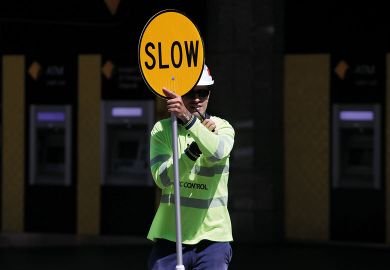Changes to Australian visa policy risk undermining efforts to diversify overseas enrolments by concentrating more of the multibillion-dollar international education industry among a few big players, sector leaders have warned.
New visa processing arrangements favour the richest universities – which already dominate international enrolments – while encouraging student flows from China, the dominant source country.
Mid-tier universities face increasing obstacles in recruiting foreign students, particularly from South-east Asia, Africa and Latin America – long considered the go-to regions for an industry overexposed to China.
Recent changes to institutions’ immigration risk ratings leave just 16 of 42 Australian universities in the top level 1 category. They include the seven biggest universities and seven of the 12 institutions that already have the highest concentrations of overseas enrolments.
Visa applications to study at level 1 universities are processed more quickly and require less paperwork than applications from students enrolled with level 2 or 3 institutions.
On average, overseas students already constitute 33 per cent of enrolments at level 1 universities compared with 21 per cent at the 26 institutions now bearing level 2 and 3 ratings.
While home affairs minister Clare O’Neil said the government’s visa changes were “reducing exploitation and rorting [fraud] in higher education”, the downgrading of institutional risk ratings is mainly a direct result of government policy. One-quarter of the score determining each institution’s current rating is calculated from the previous year’s rate of non-fraud-related visa cancellations.
Sarah Todd, vice-president of Griffith University, said many students had been attracted by the Covid-era removal of the cap on working hours during term time – a situation that prevailed for more than a year after the Labor government assumed office, despite warnings of perverse outcomes. Some students had abandoned their courses after arriving in Australia, forcing Griffith to cancel their visas.
“The metric used is the number of visa cancellations against the total number of active visas,” Professor Todd said. “Universities with larger numbers of international students can take more risks because a few cancellations won’t impact them as much.”
Campus resource collection: Create welcoming classrooms for international students
Visa refusals determine another 10 per cent of each institution’s risk rating. Rejections have skyrocketed in recent months, with insiders attributing this to the government’s desire to reduce temporary visitor numbers rather than fraudulent visa applications.
“We just don’t get clarity on why we’ve had a visa refusal,” said Mark Harvey, deputy vice-chancellor of Queensland University of Technology (QUT). “We’ve seen a very strong skew on visa refusals from the [Indian] subcontinent and not from north Asia.”
Like Griffith, QUT had its risk rating downgraded to level 2. Just 14 per cent of its students are international. But QUT recruits about half of its international students from South Asia and only about 10 per cent from China.
Risk ratings have been downgraded for countries as well as institutions. China, along with many Western nations, has a level 1 rating. India, Nepal and Pakistan are among the countries bearing the lowest level 3 rating, along with Kenya, Nigeria, Thailand and the Philippines – all large countries seen as promising diversification markets.
“You’re going to see continued skewing towards Chinese students over subcontinent students,” Professor Harvey said. “There’s a significant discussion for a long time now that we need to diversify and broaden, and yet the policy settings…go against that. It doesn’t make sense.”
Professor Todd said Griffith’s efforts to explore new source countries had contributed to the downgrading of its risk rating. “It’s always a challenge when you’re trying to diversify into a market where you don’t have a great deal of history to help you assess the…likelihood of students getting visas.
“If you look at most universities that are now sitting on level 2, and institutions that are level 1 but will soon move to level 2, they tend to [have] more diversified student cohorts. The danger is that universities will pull back on some of the diversification moves that have been made in recent years – which seems counter to what everybody wants.”
Register to continue
Why register?
- Registration is free and only takes a moment
- Once registered, you can read 3 articles a month
- Sign up for our newsletter
Subscribe
Or subscribe for unlimited access to:
- Unlimited access to news, views, insights & reviews
- Digital editions
- Digital access to THE’s university and college rankings analysis
Already registered or a current subscriber?










